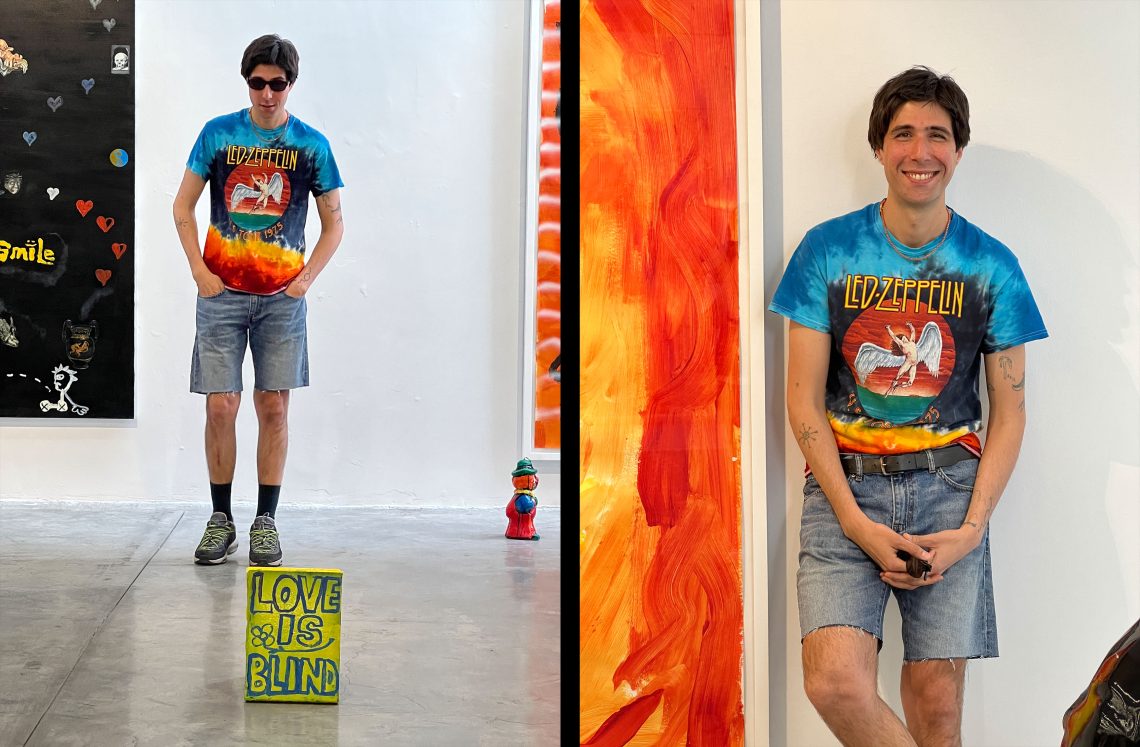Different Forms of Expression with Tarık Töre
Tarık Töre, who explores human action in his exhibition titled “Caspar David Friedrich Nietzsche Guevara” in Pilevneli Gallery, intends to contextualize our activities that develop on the axis of emotion, reason and action in his works. During our conversation about his exhibition and his artist identity, we had the opportunity to get to know Tarık and the perspective behind his works, more closely.
How did your relationship with art develop? How did you start your production journey?
I think music had a big impact. At that time, I was interested in things like album covers and styles of the bands I listened to. After high school, I decided to pursue fine arts.
We know that you are also interested in music, at what points do these two fields interact with each other in your works?
Both are different forms of expression, for movements such as punk and lo-fi were very effective in terms of the DIY culture. Both are fields that largely use visual language. I can say that it get his own culture from art. At first it had a lot of impact.

Where does the essence of your creativity come from?
I guess I can’t answer exactly, but it could be communication and self-knowledge.
How would you describe your art language to us?
I think the biggest advantage and disadvantage of contemporary art is its freedom. When I was thinking about how I could adapt an area that is so wide, I moved towards a maximalist production with small pieces. In other words, I tried to re-adapt the structure to prevent elements such as subject, form, and narrative from becoming an obstacle. This may turn into a unique language over time. The main purpose was to convey what I wanted.
The interweaving of words also gives independent things give a new meaning. From this point of view, I deal with the multi-figure structure in my works.
How would you define inspiration? Where is the inspiration in your works?
Emotions in a nutshell… It comes easily when I come up with an idea where I can visualize the emotion.

Can you talk a little bit about your exhibition in Pilevneli?
It’s been a kind of experiment in how people act. I have always thought of the action that changes according to fragmented structure of a mood. What is the cause in acting without hesitation? When I first started the series of multi-figure works, I had a goal of removing this restriction. Now I focused on the next issues. I can say that the exhibition is about how the perspective is reflected in general.
The name of the exhibition is “Caspar David Friedrich Nietzsche Guevara”, how did you associate these figures with your works?
If I explain Caspar David Friedrich Nietzsche Guevara, we can easily call it caricature. I thought of the 3 iconic figures in this title as symbols representing the main moving points of the human being. Caspar David represents emotion, Nietzsche represents reason, and Che represents action.In order to deal with the issue in depth both in the part of generating ideas and in the sharing phase, before presenting an opinion on any subject from a subjective point of view, I think that it is useful to distort the issue first and make it meaningless, so that the claim itself does not turn into a caricature. In other words, shaking it first and making it meaningless adds a great deal of freedom afterwards. The interweaving of words also gives independent things give a new meaning. From this point of view, I deal with the multi-figure structure in my works. It is interesting for me to see how independent pieces form a narrative by themselves in a single context.

In this exhibition, we also see his multidisciplinary works, especially “Human Nature” attracts the attention of visitors. Can you talk about the starting point of the work and the reactions you got?
In the work “Human Nature”, there is the discovery of fire and the theme of dance and music. It is working with which is a depiction of paying a small price. It is an idea that supports the primitive narrative in the paintings. The source of origin is the weight and confusion that knowledge brings to people. Discovering fire is a response to one’s actions in return for self-awareness.